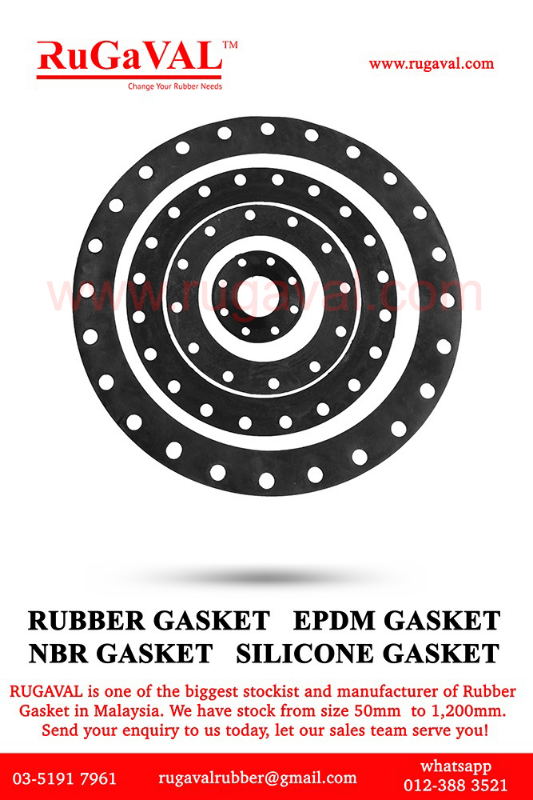The Difference Between a Raised Face and Flat Face Flange Rubber Gasket

The difference between a raised face and a flat face flange is that the raised face has a raised area that surrounds the pipe bore and the flat face flange doesn’t. These are two of the most commonly used types of flange faces. They can both be sealed with one of two different types of gaskets, the ring type and the full-face gasket. This post will provide some details on the raised face flange, the flat face flange, and the two types of gaskets used with them.
The Difference Between a Raised Face and Flat Face Flange Rubber Gasket
The difference between a raised face and a flat face flange is that the raised face has a raised area that surrounds the pipe bore and the flat face flange doesn’t. These are two of the most commonly used types of flange faces. They can both be sealed with one of two different types of gaskets, the ring type and the full-face gasket. This post will provide some details on the raised face flange, the flat face flange, and the two types of gaskets used with them.
Raised Face Flange
The raised face is the most common flange face type used. It’s called a raised face because it has a raised surface above the bolting circle where the gasket is placed. Sealing this type of flange face is accomplished by compressing a soft, flat, or semi-metallic gasket between mating flanges in the raised area of the flanges.
Raised face (RF) flanges are common in process plant applications but can be used in almost all applications. They are suitable for use in high and low temperatures and pressures. The purpose of the RF flange is to focus more pressure on the smaller gasket area, which increases the pressure containment capabilities of the joint.
Flanges are sized according to pressure ratings. The higher the pressure rating of the RF flange, the bigger the flange diameter, the number of bolts it requires, and the thicker both the flange itself and the raised face are.
Flat face (FF) flanges are similar to the RF flanges, but they do not have the raised area like the RF flange. Instead, the whole surface is flat. That means that the gasket used with the FF flange has full contact with the whole surface where two flanges are mated. The gaskets for FF flanges are typically made from non-metallic materials like Viton (a brand of fluoroelastomer) or EPDM (ethylene-propylene diene monomer); it’s uncommon for them to be metallic.
The purpose of the FF flange is to avoid the bending moment that is put on the flange as the bolts are torqued. Some flange materials can easily break at this time, such as cast iron and fiberglass. FF flanges eliminate this problem.
Generally speaking, flat face flanges are used in less arduous applications, like low-pressure water piping. They are commonly used in low temperature and pressure environments such as pump suctions or water treatment flanges.
Gaskets to Seal Flanges
Sealing raised face or flat face flanges allows for two different types of gasket shape, the full-face and the ring-type. It’s important to know which type is best for your application and to understand the measurements you will need to know when you buy them.
Ring Type Gasket
The ring type gasket can be used for both the RF and FF flanges. It sits around the pipe bore and inside of the flange bolts, and in the RF flange, it is positioned on the raised surface. The ring type gasket is a drop-in gasket, which means it can be installed without taking apart the whole joint. It also requires less material and cutting than a full-face gasket, though it can be harder to clamp into position.
The measurements you need to know for ring type gaskets are the ID (the inside diameter or pipe bore size), the OD (the outside diameter), and the thickness of the gasket.
Full-Face Gasket
The full-face gasket is typically used with flat face flanges but can also be used with RF flanges. It sits on the raised flange faces but has the same outside diameter of the flange. For that reason, it has to have holes for the bolts securing the flanges to pass through. This makes aligning the gasket easier, but it does mean that the entire joint has to be taken apart for installation. The full-face gasket is better at stopping dirt from getting into the joint because it extends all the way out to the OD.
The measurements you need to know for the full-face type gasket are the ID, the OD, the bolt circle diameter, number of bolt holes, and the gasket thickness.
How to Choose an RF or FF Flange
Choosing the right type of flange face is important, especially when the application is high pressure or temperature. In those situations, it’s best to use an RF flange, as they are designed to withstand more demanding environments. The FF flange is better for operations that are lower pressure and temperature and in systems where cast iron, fiberglass, or other materials that may break as the bolts are torqued are being used.
Table E Rubber Gasket
PN16 Rubber Gasket
ANSI150 Rubber Gasket
JIS10K Rubber Gasket
PN16 Rubber Gasket
JIS 5K Rubber Gasket
ANSI300 Rubber Gasket
